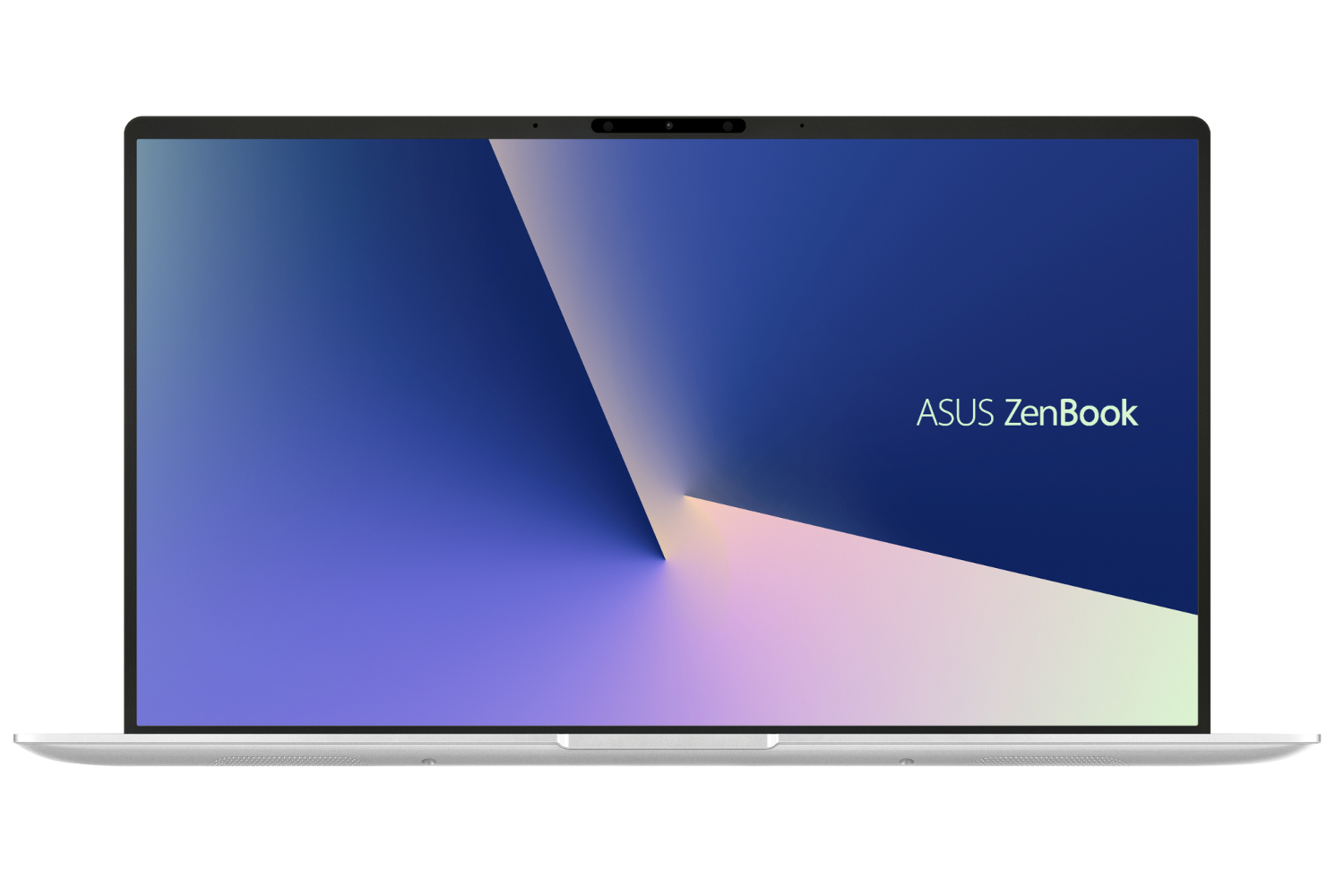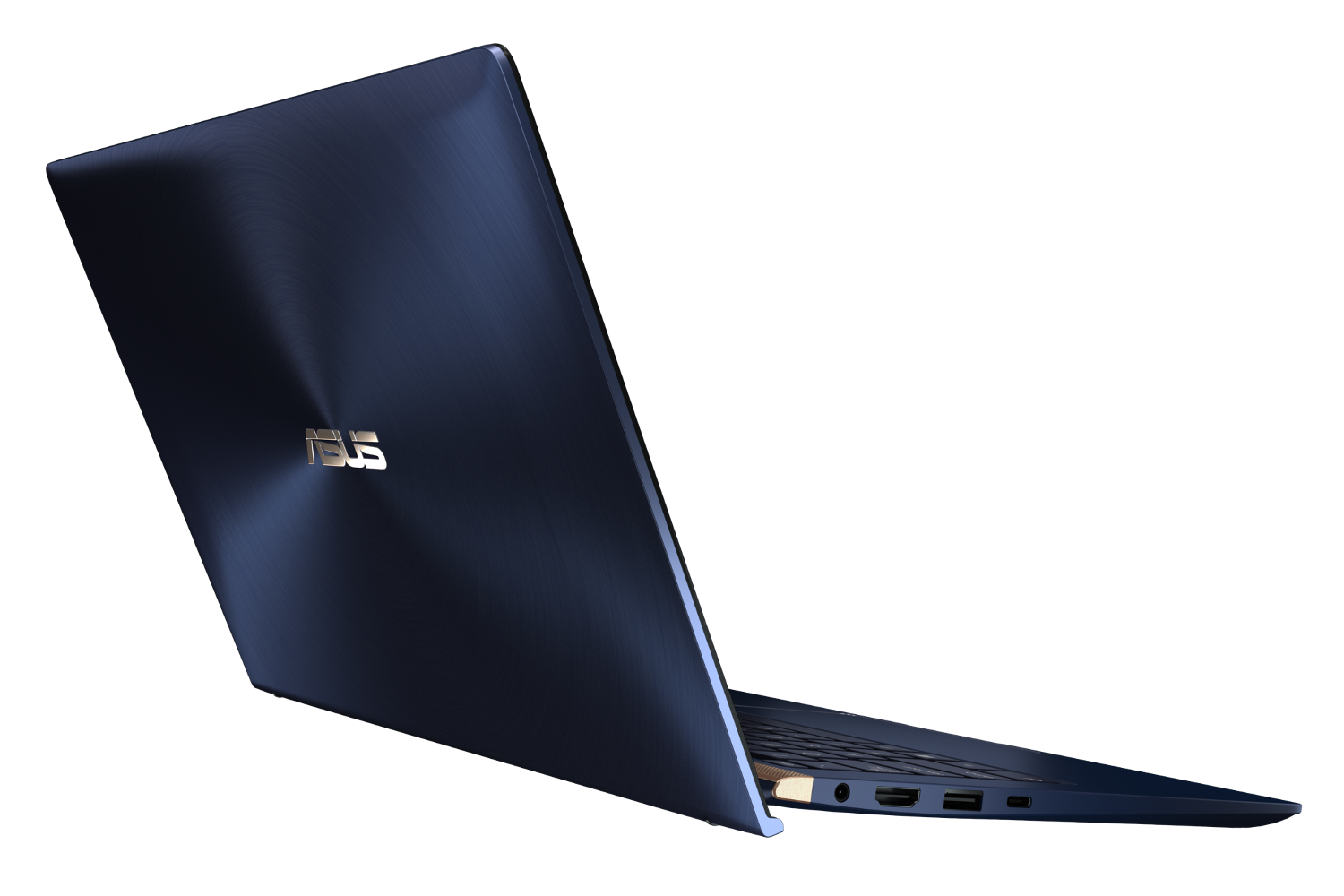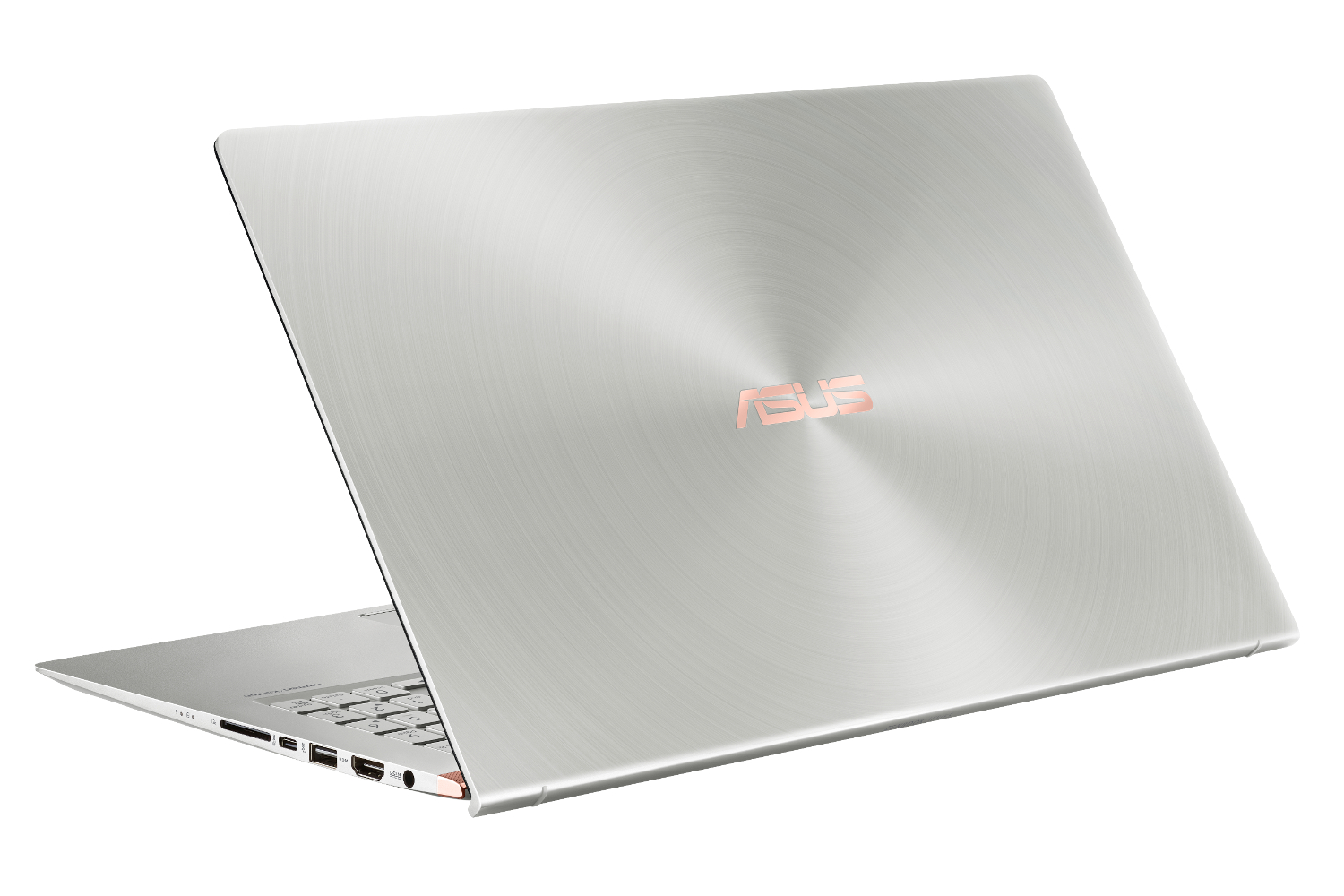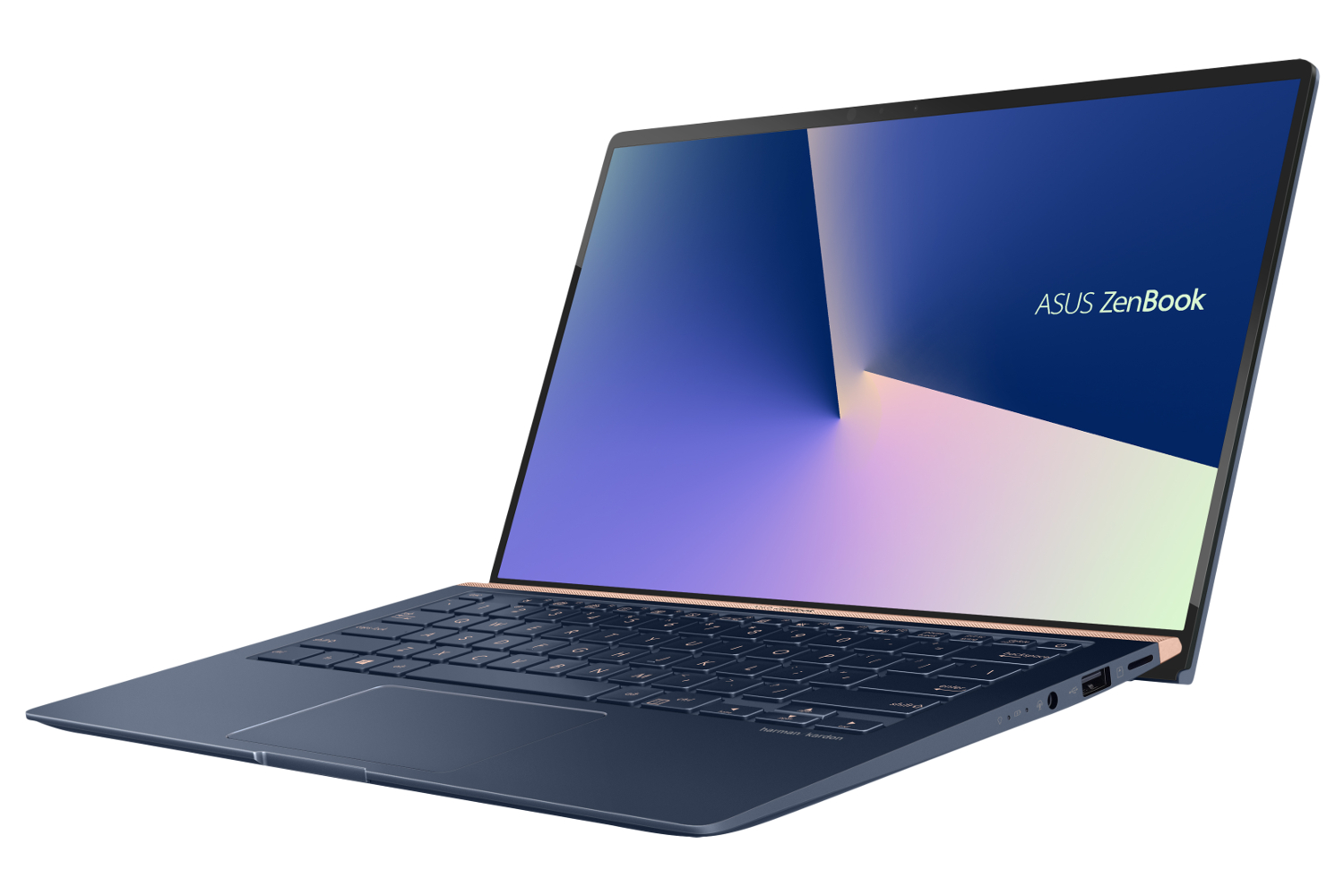Asus has introduced three new ZenBooks during the IFA 2018 conference in Berlin, and all three are based on eighth-generation Intel Core processors released this week along with discrete graphics provided by Nvidia. The new ZenBooks also sport super-thin profiles measuring up to 0.70 of an inch and infrared cameras for password-free access to Windows 10.
Intel’s new “Whiskey Lake” Core i7-8565U is a four-core chip with a base speed of 1.8GHz, a maximum speed of 4.5GHz, and a power draw of only 15 watts. Meanwhile, the new Core i5-8256U chip packs four cores with a base speed of 1.6GHz, a maximum speed of 3.9GHz, and a power draw of 15 watts. This chip replaces the Core i5-8250U released in August 2017, while the Core i7-8565U replaces the Core i7-8550U chip released in the same time period.
Although all three models include Intel’s integrated UHD Graphics 620 component, the 13.3-inch and 14-inch models ship with a discrete GeForce MX150 graphics chip while the 15.6-inch version packs a gamer-centric GeForce GTX 1050 Max-Q chip. These discrete GPUs back a decent 1,920 x 1,080 resolution.
For storage, you’ll find three options: 1TB on a PCI Express 3.0 x4 SSD, and 256GB or 512GB on a PCI Express 3.0 x2 SSD. Memory is only 8GB or 16GB, although the two smaller units rely on LPDDR3 sticks clocked at 2,133MHz, while the 15.6-inch model relies on DDR4 sticks clocked at 2,400MHz.
“ZenBook 13 and 14 are equipped with the exclusive new Asus NumberPad,” the company says. “NumberPad solves the age-old problem of the lack of a dedicated numeric keypad on compact laptops. Tapping the NumberPad icon at the top right corner of the touchpad reveals a full-size LED-illuminated numeric keypad, allowing rapid and intuitive data entry or calculations. ZenBook 15 features a traditional physical numeric keypad.”
Despite their varied sizes, all three include the same connectivity options, including one USB-C port with transfer speeds of up to 10Gbps and a USB-A port with the same 10Gbps maximum speed. According to Asus, the new ZenBooks also meet the MIL-STD-810G standard, meaning they endured tests targeting high humidity, high temperatures, and extreme altitudes.
Finally, the new ZenBooks include infrared cameras supported by Windows Hello in Windows 10 Home and Pro. That means you can log into these two platforms with just a smile (or frown if you haven’t gulped any coffee) without the need for a password.
The full list of hardware specifications is below. A shipping date and price for all three models is unknown.
| UX333FN | UX433FN | UX533FD | |
| Screen size: | 13.3 inches | 14.0 inches | 15.6 inches |
| Resolution: | 1,920 x 1,080 | 1,920 x 1,080 3,820 x 2,160 |
|
| Processor: | Core i7-8565U Core i5-8265U |
||
| Graphics: | GeForce MX150 | GeForce GTX 1050 Max-Q | |
| Memory: | 8GB or 16GB LPDDR3 @ 2,133MHz |
8GB or 16GB DDR4 @ 2,400MHz |
|
| Storage: | 256GB to 1TB | ||
| Camera: | 3D IR HD | ||
| Connectivity: | Wireless AC Bluetooth 5.0 |
||
| Ports: | 1x USB-C (10Gbps) 1x USB-A (10Gbps) 1x USB-A (480Mbps) 1x HDMI 1x Micro SD 1x Audio combo jack |
||
| Battery: | 50WHr | 73WHr | |
| Size (inches): | 11.88 x 7.44 x 0.66 | 12.55 x 7.83 x 0.62 | 13.93 x 8.66 x 0.70 |
| Weight: | Up to 2.62 pounds | Up to 2.62 pounds | Up to 3.72 pounds |
| Availability: | Unknown | Unknown | Unknown |
| Starting price: | Unknown | Unknown | Unknown |






